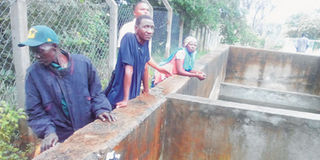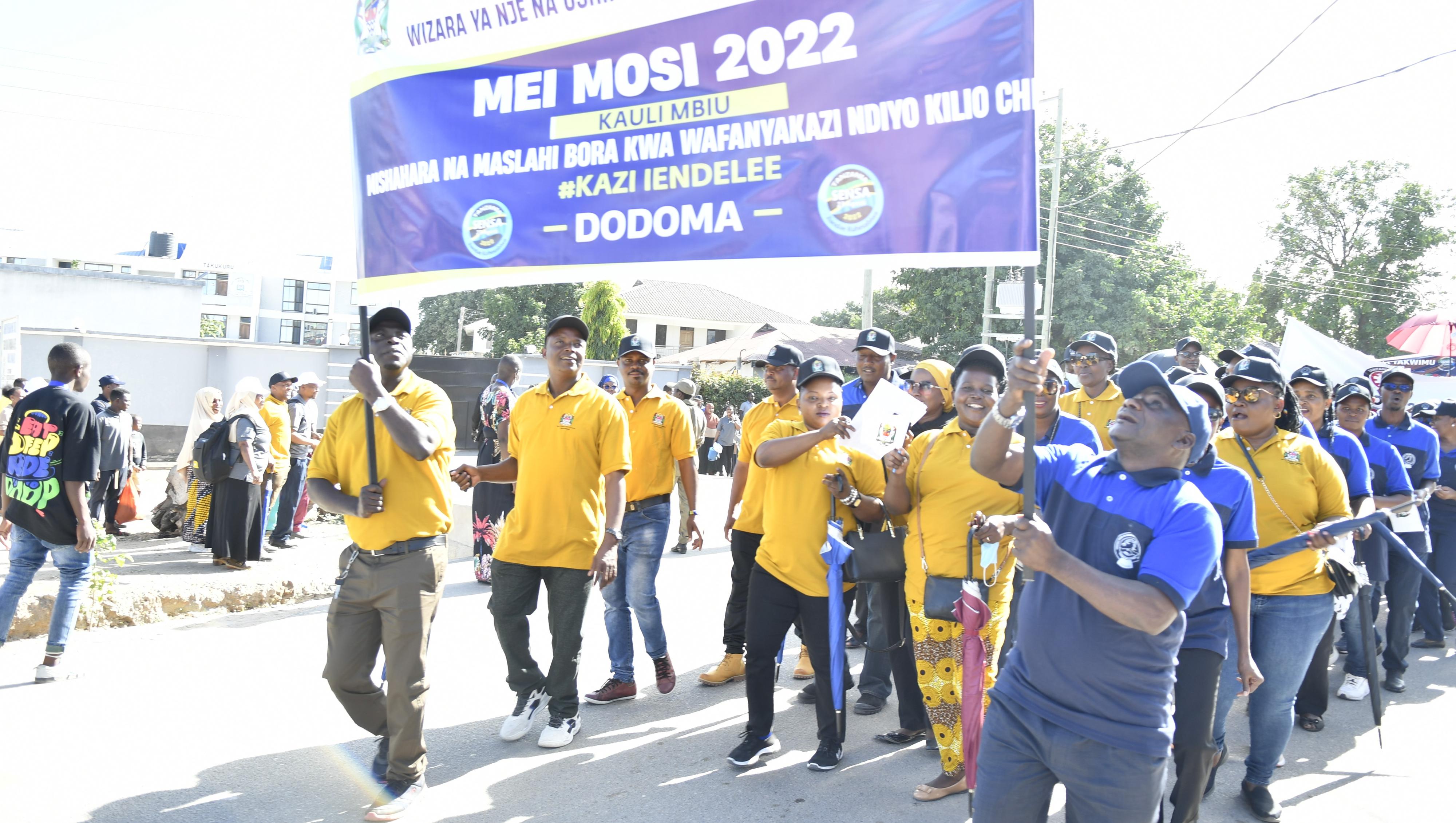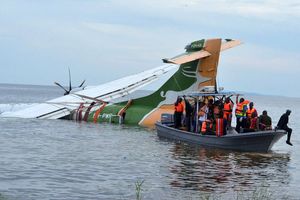Sh400m project now a headache

Kigurusimba villagers are disappointed by their water project. PHOTO|GEORGE SEMBONY
What you need to know:
- They were also happy because they thought water woes would end, their health would improve and would concentrate on crop production.
Pangani. When a Sh407.6 million project started in 2014 at Kigurusimba in Pangani District, villagers were cock-a-hoop, thinking the danger of being attacked by crocodiles when drawing water from River Pangani would be over.
They were also happy because they thought water woes would end, their health would improve and would concentrate on crop production.
“Women used to spend a lot of time fetching water from River Pangani instead of doing domestic work or farming,” said Pangani District water engineer Norbert Temba.
How wrong they were! The project is not that entirely wondrous. Now over 800 villagers are in a worse situation of consuming contaminated water than before.
A filter is leaking and water from River Pangani bypasses the treatment plant and goes directly to the distribution tank.
The resignation of seven members of a Water User Association committee has exacerbated the situation.
The association’s secretary, Mr Joel James, cites lack of allowances as the reason for their resignation.
Angry villagers, dissatisfied with the way things were being undertaken, piled pressure on the committee leaders, prompting three members to quit.
Kigurusimba is one of 10 villages in Pangani District where the World Bank-financed National Rural Water Supply and Sanitation was being implemented.
The project, whose implementation, according to Mr Temba, started in May 2014 was completed in March 2015, and has been handed over to the villagers. A recent visit to the water project by Pangani District Council Water and Sanitation Team (CWST) concluded that it could not provide clean and safe water services.
The team directed Mr Temba to immediately rectify the matter. The project draws water from River Pangani which empties its contents in the Indian Ocean at Pangani Town.
Other problems observed were lack of supervision of water points which in addition were not well kept and thus dangerous to users.
“What is more surprising is that water does not reach the villagers and no nothing is being done to solve the matter,” a team member said.
The team said it was obvious that the construction was shoddy.
According to a report, the Water Department had not bothered to solve the project’s administrative problems that do not need so much funding.
Mr Temba promised to correct the situation. “We have seen the problems which include engineering mistakes. It is unimaginable, for instance, for such a project to be constructed without a filter or any way of water treatment.”
He said that the council facilitated the formation of a new Water User Association and registration of the committee.
He said the breakup of the previous association was mainly due to higher expectations on financial benefits of individual members. “Most of the members expected to get sitting allowances, but the committee could not offer because there were no funds.”
He said the council would install a filter to ensure water is being distributed to villagers is treated to avoid turning the project into a hygienic disaster.
The CWST had directed Mr Temba to look for funds to repair the project.
Three village hamlets -- Kijiweni, Pongwe and Misifuni – were expected to benefit from the project.
The project is managed by the Water User Association and users pay Sh100 per bucket so as to have funds to make the project sustainable.
The Kigurusimba water project failed because important stakeholders were sidelined. “Projects are divided into two parts: technical and social parts,” Mr Temba said.
He said that technicians must make sure community development officers are involved in the implementation of any project.
The team emphasised the need for proper training to user associations to enable them to deliver the goods.
“This kind of training should be continuous to enable members and communities to own the projects to sustain them for the benefit of the targeted beneficiaries,” a team member said. There are several inhabited islands within the river. The river is full of crocodiles; hippopotami are scarcer in its lower parts.
The Pangani River is a major river. For much of its length the Pangani river flows along the regional borders of Kilimanjaro Region and Manyara Region, before flowing into Tanga Region, which contains the 68 MW Pangani Power Station and the Pangani Falls Dam. There are several inhabited islands within the river. The river is full of crocodiles; hippopotami are scarcer in its lower parts.
The Pangani Basin is a transboundary basin shared by Tanzania and Kenya; which covers 56,300 square kilometres where 5 per cent of this area lies in Kenya.
The basin consists of five sub-basins; Pangani River (43,650 km2), Umba River (8,070 km2), Msangazi River (5,030 km2), Zigi and Coastal Rivers including Mkulumuzi (2,080 km2) which all independent drain to the Indian Ocean. The Pangani River Basin has two main tributaries, Kikuletwa and Ruvu Rivers, which join at Nyumba ya Mungu, a large man-made water body with a surface area of 140 km2.
The highest mountain in Africa is Mt Kilimanjaro (5,985 masl) which together with Mt Meru (4,566 m.a.s.l) provide the source of Kikuletwa river flow, while the Ruvu, Mkomazi and Luengera Rivers drain part of Kilimanjaro, Pare and Usambara mountains and the springs emerged in Kenyan side. There are two unique lakes in the Basin namely Jipe and Chala which are Transboundary water bodies.
The basin is also endowed with high potential for groundwater. Only five per cent of all the water used in the Basin is derived from groundwater sources. Boreholes yielding >100 m3/h have been drilled in the Kahe plains. The main economic activities in the basin are small scale fishing, tourism, hydroelectricity power production and mining.



